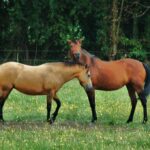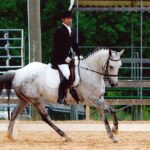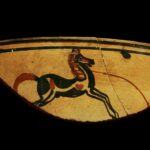The relationship between horse breeds and riding techniques is a fascinating intersection of biology, history, and artistry. For thousands of years, humans have selectively bred horses for specific traits and purposes, resulting in breeds with distinct conformations, temperaments, and movement patterns. These genetic differences significantly impact how riders communicate with their equine partners and the riding styles that have developed across cultures and disciplines. Understanding the connection between horse breeds and riding techniques not only enriches our appreciation of equestrian traditions but also helps riders select suitable mounts and adapt their approaches to bring out the best in each individual horse. This exploration delves into how different breeds have shaped diverse riding techniques and styles around the world.
The Fundamental Connection Between Conformation and Riding Style

A horse’s physical structure, or conformation, directly influences how it moves and what riding techniques work best with it. Breeds with long, sloping shoulders and well-set necks, like Thoroughbreds or Warmbloods, typically have more extravagant front leg movement that’s prized in dressage and show jumping. Horses with shorter backs and powerful hindquarters, such as Quarter Horses, excel at quick turns and rapid acceleration required for western disciplines like reining and cutting. The horse’s natural balance point, determined by its conformation, affects where a rider should position themselves—forward on sprinters and jumpers or more centered on collected, dressage-type horses. Understanding these anatomical influences helps riders work with rather than against their horse’s natural tendencies, leading to more harmonious partnerships.
Warmblood Breeds and Classical Dressage

European Warmblood breeds like Hanoverians, Dutch Warmbloods, and Oldenburgs have been purposefully developed for classical dressage and show jumping over centuries. Their medium to large frames, uphill build, and naturally balanced gaits create the perfect canvas for the precise movements required in dressage. Riders of these breeds typically adopt a deep, vertical seat position that enables clear communication through subtle weight shifts and leg aids. The training progression with these breeds often follows classical principles dating back to the Renaissance riding academies, emphasizing collection, extension, and lateral movements. Their naturally expressive movement, particularly their ability to engage their hindquarters and elevate their forehand, makes them ideal partners for the artistic expression of dressage, requiring riders to develop exceptional timing and feel to harness rather than hinder their natural athleticism.
Thoroughbreds and Forward-Seat Riding

The Thoroughbred’s influence on forward-seat riding techniques cannot be overstated, particularly in the jump and hunt seat disciplines. Developed for speed and stamina on the racetrack, Thoroughbreds possess long, reaching strides and a natural preference for forward movement. The forward riding position—with shortened stirrups and the rider’s weight carried over the horse’s withers—evolved specifically to accommodate this breed’s way of going over fences. Italian cavalry officer Federico Caprilli revolutionized jumping technique in the early 20th century by developing the forward seat specifically to free up the Thoroughbred’s back and allow for more efficient jumping. This technique, which includes folding at the hips over jumps rather than leaning back, complements the Thoroughbred’s natural athletic ability and has become the foundation of modern hunt seat equitation, eventing, and show jumping approaches.
Quarter Horses and Western Riding Techniques

The American Quarter Horse, with its powerful hindquarters, low center of gravity, and incredible agility at slower speeds, has shaped western riding techniques since American frontier days. The western riding style, characterized by a deep seat, longer stirrups, and relaxed posture, evolved directly from working with these cattle-oriented horses. Western riders often use a loose rein approach with neck reining (indirect rein) techniques that allow the horse to use its natural cow sense while keeping the rider’s hands free for other tasks. Quarter Horses’ innate ability to anticipate cattle movements, combined with explosive acceleration and rapid directional changes, led to specialized disciplines like cutting, reining, and team penning. The western horsemanship tradition emphasizes minimal visible cues and maximizing the horse’s natural talents, creating a distinct riding approach that differs dramatically from English styles.
Arabians and Endurance Riding Approaches

Arabian horses have profoundly influenced endurance riding techniques with their exceptional stamina, efficient movement, and remarkable recovery abilities. Riders of Arabians in endurance competitions typically adopt a forward, light seat that stays off the horse’s back during long distances, alternating between posting trot and two-point position to reduce fatigue for both horse and rider. Endurance riders have developed specialized management techniques specifically for Arabian physiology, including precise monitoring of heart rate recovery, electrolyte supplementation, and strategic pacing that takes advantage of the breed’s natural efficiency. The Arabian’s alert temperament and sensitivity require riders to develop excellent balance and quiet hands that won’t interfere with the horse’s natural rhythm during long distances. These techniques have become standard in the sport of endurance riding worldwide, largely because the Arabian’s natural abilities have consistently proven superior at distances over 50 miles.
Gaited Horses and Specialized Riding Techniques

Gaited breeds like Tennessee Walking Horses, Missouri Fox Trotters, and Paso Finos possess genetic differences that allow them to perform intermediate gaits beyond the standard walk, trot, and canter. Riding these horses effectively requires specialized techniques that encourage and refine their natural smooth gaits rather than trying to make them move like non-gaited breeds. Riders of gaited horses typically sit deeper with a more vertical upper body position and use subtle weight shifts rather than posting or rising movements, which would interrupt the horse’s natural rhythm. The hand position and rein contact with gaited breeds often differs from traditional English or Western styles, maintaining a steady, supportive contact that helps the horse maintain its special gait without interference. Training approaches for these breeds focus on gait development and maintenance rather than the collection and extension principles used with trotting horses, creating an entirely different riding pathway and skill set.
Draft Horses and Driving Techniques

The massive size and powerful build of draft breeds like Clydesdales, Percherons, and Belgians have created specialized handling and driving techniques that differ dramatically from riding approaches. These breeds, developed for agricultural work and pulling heavy loads, require handlers to understand leverage and momentum principles when working from the ground or driving them in harness. Driving techniques for drafts emphasize voice commands and consistent contact with the bit, as these horses have been selectively bred to respond to pressure rather than subtle seat aids. The pace of training for draft breeds typically progresses more gradually than with lighter horses, respecting their more methodical learning style and deliberate movement patterns. Although many draft breeds can be ridden, their wide barrels, rolling gaits, and different balance points require riders to adopt a wider leg position and more centered seat than would be used on lighter breeds.
sIberian Breeds and Classical High School Riding

Spanish Andalusians, Portuguese Lusitanos, and other Iberian breeds have been the foundation of classical “high school” riding for centuries due to their natural ability to collect and perform advanced movements. These breeds typically have more naturally upright carriage, powerful hindquarters, and flexible backs that facilitate advanced maneuvers like piaffe, passage, and the “airs above the ground.” Riders of Iberian horses often adopt techniques from classical schools like the Spanish Riding School of Vienna, emphasizing an extremely deep seat, precise hand positioning, and highly refined leg aids. The training progression for these breeds traditionally follows centuries-old methods designed to develop their natural talents for collection and elevated movement. The riding techniques used with these horses focus on creating maximum engagement of the hindquarters, elevation of the forehand, and the development of self-carriage—principles that have influenced all classical dressage regardless of breed.
Ponies and Adaptive Riding Techniques

Pony breeds require specific adaptations in riding technique due to their compact size, different proportions, and often stronger personalities compared to full-sized horses. Riders must adjust their expectation of stride length and tempo, particularly in jumping disciplines where ponies cannot simply be ridden like smaller horses. Pony-specific techniques often include more active riding with clearer aids, as many pony breeds have been selected for intelligence and independence that can sometimes translate to stubbornness if not properly channeled. Children learning on ponies develop unique skills in determination and clarity that serve them well if they later transition to horses. Many instructors note that the best riders often started on challenging ponies, where they learned to balance influence with partnership—a valuable foundation regardless of what breeds they ride in the future.
Mustangs and Natural Horsemanship Approaches

Mustangs and other feral-heritage breeds have significantly influenced natural horsemanship techniques that prioritize understanding equine psychology and communication. These horses, having lived without human handling, respond best to techniques that respect their heightened sensitivity and natural wariness. Natural horsemanship practitioners working with Mustangs typically focus on establishing clear boundaries and consistent leadership through groundwork before mounting, creating a foundation that translates to respectful ridden work. The incremental pressure-and-release techniques central to natural horsemanship were refined through working with these more reactive, survival-oriented horses. Many trainers note that the skills developed with sensitive Mustangs create more nuanced riders who can later apply these principles to any breed with excellent results.
Crossbreeding and Evolution of Riding Styles

The deliberate crossing of different horse breeds has led to the evolution of riding techniques that combine elements from multiple traditions. Sport horse breeding programs that mix Thoroughbred speed with Warmblood movement and draft horse strength have created versatile athletes that require riders to synthesize different approaches. Modern competitive disciplines like eventing demand that riders seamlessly transition between dressage precision, cross-country boldness, and show jumping technique—a versatility that mirrors the purposeful crossbreeding of the horses themselves. As breed registries have become more open to crossbreeding for specific purposes, riding techniques have similarly evolved to become more integrated across traditional divides. The most successful riders in contemporary equestrian sports often demonstrate mastery of multiple riding styles, adapting their techniques to each individual horse regardless of its breed background.
Cultural Traditions and Breed-Specific Riding Styles

Around the world, distinct horse breeds have developed alongside regional riding traditions that showcase their particular strengths. The Russian Don and Orlov horses influenced Cossack riding techniques that emphasize extreme rider athleticism, including standing on horseback and dramatic mounting/dismounting at speed. Mongolian horses and the horseback traditions of the steppes feature unique saddles, riding positions, and training approaches suited to endurance over harsh terrain. South American traditions like those of the Argentine gaucho developed specific techniques for the Criollo horse that emphasize durability, cow sense, and adaptability to varied environments. These cultural riding traditions often remain strongly tied to their traditional breeds, preserving not just unique equestrian skills but also cultural heritage and identity through horsemanship practices.
Modern Adaptations and Cross-Disciplinary Approaches

Today’s equestrian world increasingly recognizes that effective riding transcends breed-specific techniques, with many riders adopting cross-disciplinary approaches that borrow from multiple traditions. Dressage principles are now applied to western performance horses to improve their balance and collection, while western training approaches like groundwork are used with English sport horses to develop respect and partnership. Sports science has contributed evidence-based understanding of equine biomechanics that applies across breeds, helping riders develop techniques that support their horse’s physical well-being regardless of genetic background. Modern competitive riders often seek training across multiple disciplines, recognizing that diverse experiences create more adaptable, effective techniques. This evolution reflects a growing understanding that while breeds certainly influence optimal riding approaches, the principles of good horsemanship transcend breed-specific traditions.
Conclusion

The intimate connection between horse breeds and riding techniques represents one of the most fascinating aspects of equestrian art and science. While certain breeds clearly lend themselves to specific disciplines and approaches due to their conformation and temperament, the most successful riders develop the versatility to adapt their techniques to each individual horse. As our understanding of equine biomechanics, psychology, and learning theory advances, riding approaches continue to evolve beyond traditional breed-specific boundaries. Nevertheless, appreciating the historical relationship between breeds and riding styles enriches our horsemanship and helps preserve diverse equestrian traditions. Whether working with a powerful draft horse, an elegant Warmblood, or a nimble Quarter Horse, the thoughtful rider recognizes how breed characteristics influence optimal communication and performance, creating partnerships that honor each horse’s unique heritage and abilities.







